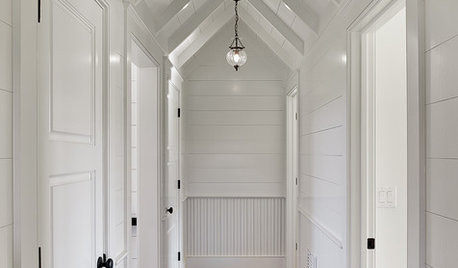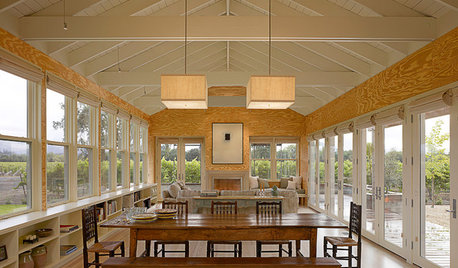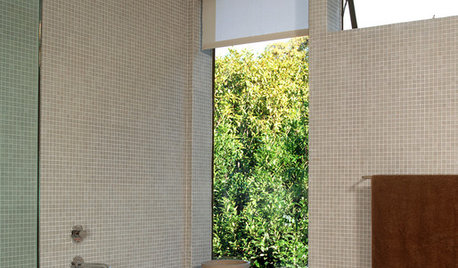Gypsum/Drywall
bobvisaa
10 years ago
Related Stories

MATERIALSRaw Materials Revealed: Drywall Basics
Learn about the different sizes and types of this construction material for walls, plus which kinds work best for which rooms
Full Story
HOUSEKEEPINGQuick Fix: How to Patch a Drywall Hole
Dents and dings disappear, leaving your walls looking brand new, with this fix that even a novice can do
Full Story
DECORATING PROJECTSDIY Project: Wallpaper Goes Mobile
Paper Plywood Panels for a Great Look That Can Move When You Do
Full Story
REMODELING GUIDESTongue and Groove Wall Paneling Joins the Comeback Club
Try this smooth architectural move to give your walls a streamlined appearance that conveys quality
Full Story
ARCHITECTUREThe Truth About 'Simple' Modern Details
They may look less costly and easier to create, but modern reveals, slab doors and more require an exacting hand
Full Story
PAINTINGKnotty to Nice: Painted Wood Paneling Lightens a Room's Look
Children ran from the scary dark walls in this spare room, but white paint and new flooring put fears and style travesties to rest
Full Story
ARCHITECTUREDesign Workshop: The Beauty of Humble Materials
Discover the appeal of budget-friendly plywood, concrete and other modest surfaces
Full Story
DECORATING GUIDES11 Tricks to Make a Ceiling Look Higher
More visual height is no stretch when you pick the right furniture, paint and lighting
Full Story
BATHROOM DESIGNFloor-to-Ceiling Tile Takes Bathrooms Above and Beyond
Generous tile in a bathroom can bounce light, give the illusion of more space and provide a cohesive look
Full Story
REMODELING GUIDES10 Tips for Renovating Your Basement
A professional contractor shares her tips on what to consider before you commit to a basement remodel
Full StoryMore Discussions






klem1
Kimmsr
Related Professionals
Derry Landscape Architects & Landscape Designers · Billerica Landscape Contractors · Burlington Landscape Contractors · Cliffside Park Landscape Contractors · El Reno Landscape Contractors · Hickory Hills Landscape Contractors · The Villages Landscape Contractors · Merrifield Landscape Contractors · Baker Decks, Patios & Outdoor Enclosures · Canton Decks, Patios & Outdoor Enclosures · Castle Rock Decks, Patios & Outdoor Enclosures · Greeley Decks, Patios & Outdoor Enclosures · Larkspur Decks, Patios & Outdoor Enclosures · Watauga Decks, Patios & Outdoor Enclosures · Pleasant Grove Decks, Patios & Outdoor Enclosurespnbrown
wayne_5 zone 6a Central Indiana
toxcrusadr
pnbrown
wayne_5 zone 6a Central Indiana
pnbrown
Kimmsr
pnbrown
klem1
Kimmsr
pnbrown
klem1
gardengal48 (PNW Z8/9)
Kimmsr
toxcrusadr
Elbourne
Kimmsr
toxcrusadr
Lloyd
pnbrown
Kimmsr
seysonn
Kimmsr
HU-481685792